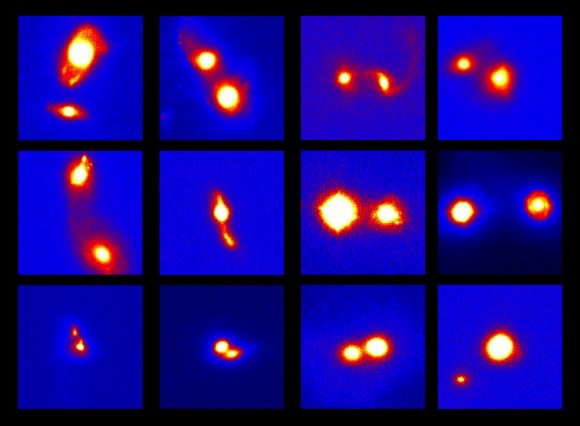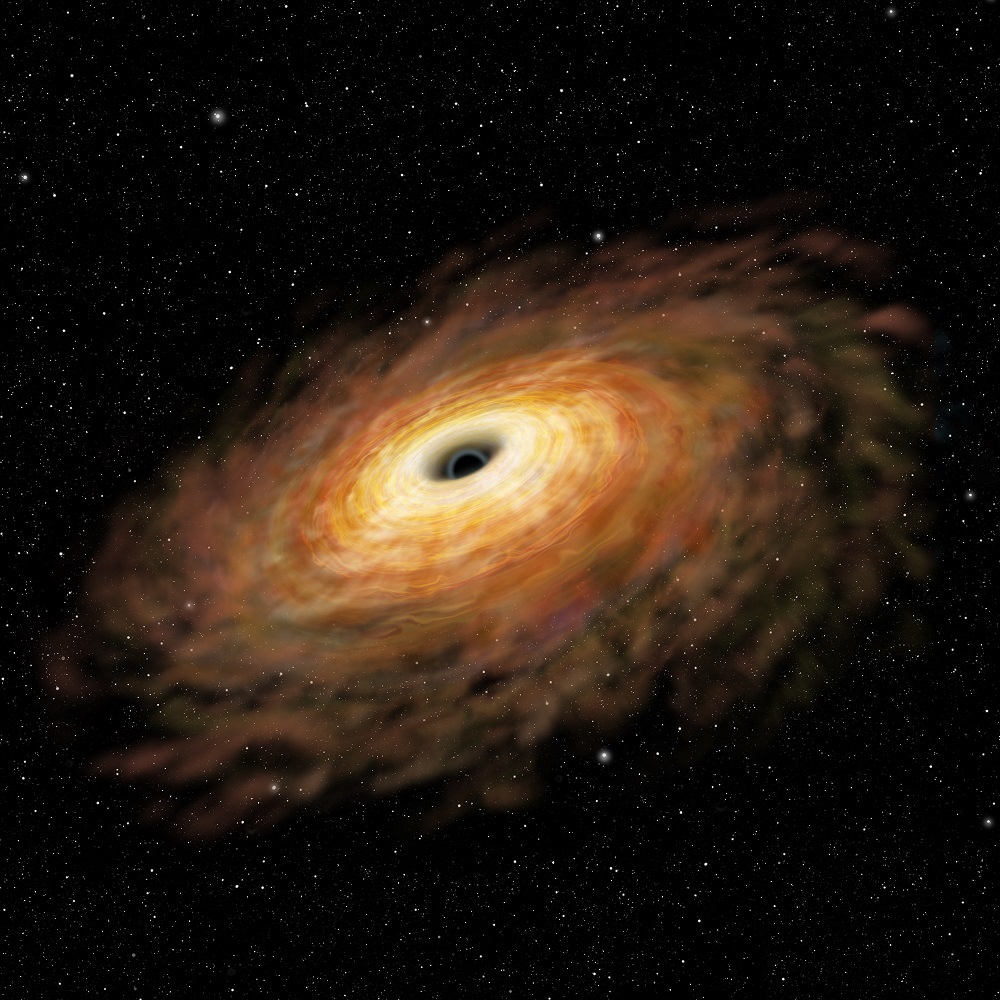If you could get a good look at the environment around a supermassive black hole — which is a black hole often found in the center of the galaxy — what factors would make that black hole keep going?
A Japanese study revealed that at least one of these black holes stay “active and luminous” by gobbling up nearby material, but notes that only a few of the observed galaxies that are merging have these types of black holes. This must mean something unique arises in the environment near the black hole to get it going, the researchers say. What that is, though, is still poorly understood.
Supermassive black holes, defined as black holes that have a million times the mass of the sun or more, reside in galaxy centers. “The merger of gas-rich galaxies with SMBHs [supermassive black holes] in their centers not only causes active star formation, but also stimulates mass accretion onto the existing SMBHs,” stated a press release from the Subaru Telescope.
“When material accretes onto a SMBH, the accretion disk surrounding the black hole becomes very hot from the release of gravitational energy, and it becomes very luminous. This process is referred to as active galactic nucleus (AGN) activity; it is different from the energy generation activity by nuclear fusion reactions within stars.”
Figuring out how these types of activity vary would give a clue as to how galaxies come together, the researchers said, but it’s hard to see anything in action because of dust and gas blocking the view of optical telescopes. That’s why infrared observations come in so handy, because it makes it easier to peer through the debris. (You can see some examples from this research below.)

The team (led by the National Astronomical Observatory of Japan’s Masatoshi Imanishi) used NAOJ’s Subaru’s Infrared Camera and Spectrograph (IRCS) and the telescope’s adaptive optics system in two bands of infrared. Researchers looked at 29 luminous gas-rich merging galaxies in the infrared and found “at least” one active supermassive black hole in all but one of the ones studied. However, only four of these galaxies merging had multiple, active black holes.
“The team’s results mean that not all SMBHs in gas-rich merging galaxies are actively mass accreting, and that multiple SMBHs may have considerably different mass accretion rates onto SMBHs,” Subaru stated.
The implication is more about the environment around a supermassive black hole must be understood to figure out how mass accretes. Knowing more about this will improve computer simulations of galaxy mergers, the researchers said.
You can read the published study in the Astrophysical Journal or in prepublished form on Arxiv.
Source: Subaru Telescope


Can someone plse explain why artists show a flat disc of gas, dust, etc around a black hole. Wouldn’t it be evenly spread around the ‘hole’ (the way an atmosphere envelops a planet)?
It probably starts as a sphere but then gas particles collide and some gets ejected other slowed down. The only particles that actually survives very long are the ones that moves in the same general direction avoiding many big collisions. They do collide but the energy transfer is minimal (meters per second) opposed to the very high speed impacts if they moved at 90 degree angles (Kilometres per second).
It is the same reason why the planets formed in a plane.
But the further you are the less likely of a collision the more spherical the objects can travel. Kuiper belt (plane like distribution) versus Oort cloud (spherical distribution) which is very far away than the Kuiper belt.
Thks for the explanation Olaf.